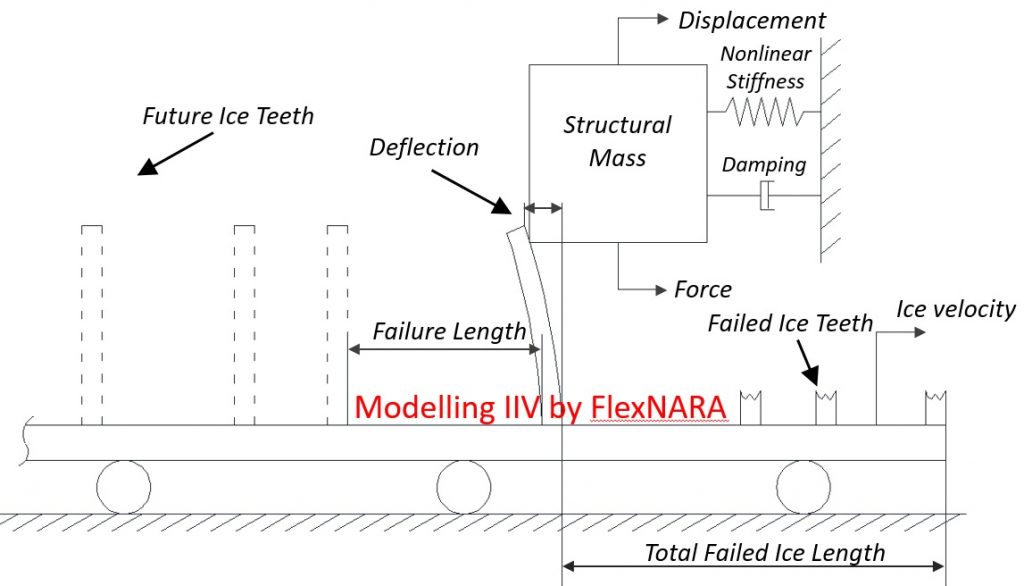Oil & gas explorations have been expanding in Arctic waters. However, numerical models for predicting IIV of offshore structures are still lacking. FlexNARA aims to develop a mathematical reduced-order model for predicting IIV effects on offshore structures under geometric coupling nonlinearities and chaotic (intermittent) ice loading behaviors. A cylindrical structure (e.g. spar platform or wind turbine monopile) subject to a moving uniform ice sheet is analyzed using the modified Matlock model which, in the present study, is extended to account for a new empirical nonlinear stress-strain rate relationship determining the maximum compressive stress of the ice. The model is further developed through the incorporation of ice temperature, brine content, air volume, grain size, ice thickness and ice wedge angle effects on the ice compressive strength. These allow effects of multiple ice properties on the ice-structure interaction to be investigated. The failed ice sheet length at a point of failure is also varied with time.

IIV model with a series of non-uniform breakable ice teeth (H. McQueen & N. Srinil, J Offshore Mechanics & Arctic Engineering 2016, 138, 011501)
The model is validated against results from the literature and provides new insights into IIV responses including the quasi-static, random-like chaotic and locked-in (similar to VIV) motions, depending on the ice velocity. Our numerical Matlock-Duffing model shows a potential to be used in future IIV analysis of arctic cylindrical structures, particularly fixed offshore structures such as lighthouses and wind turbine monopiles.
